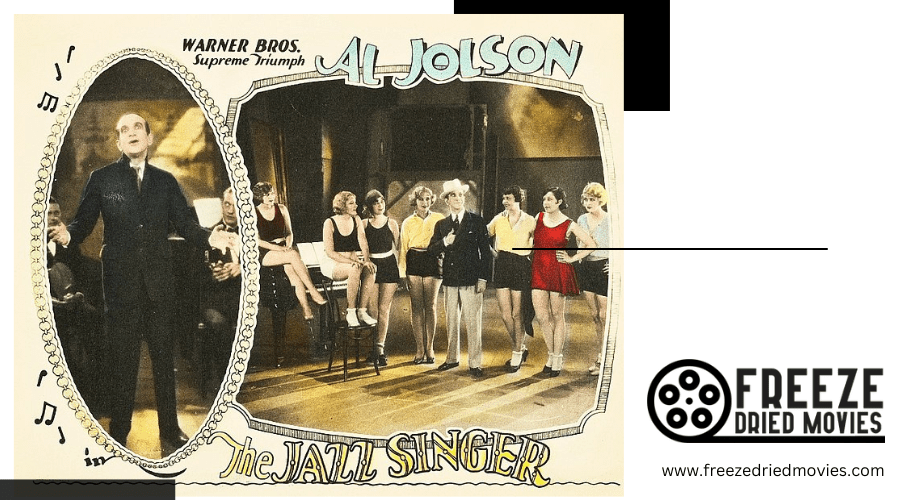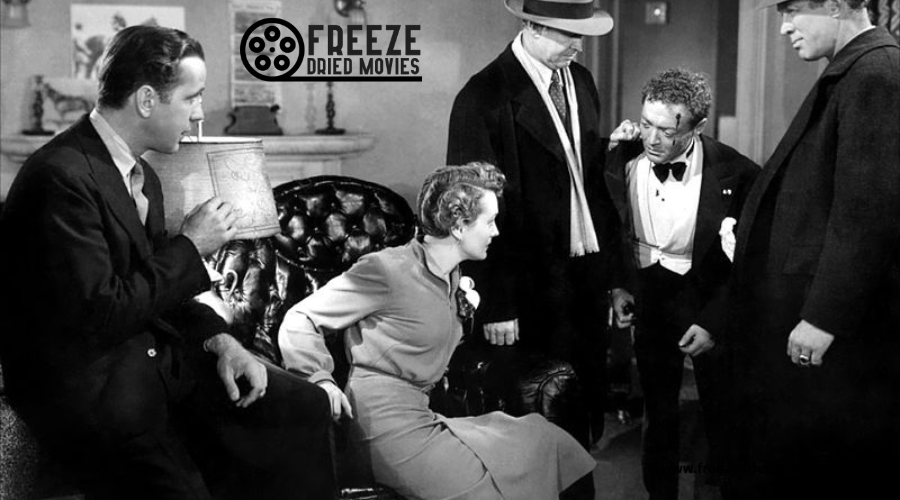Romantic Comedies of the 1930s: A Genre Blossoms
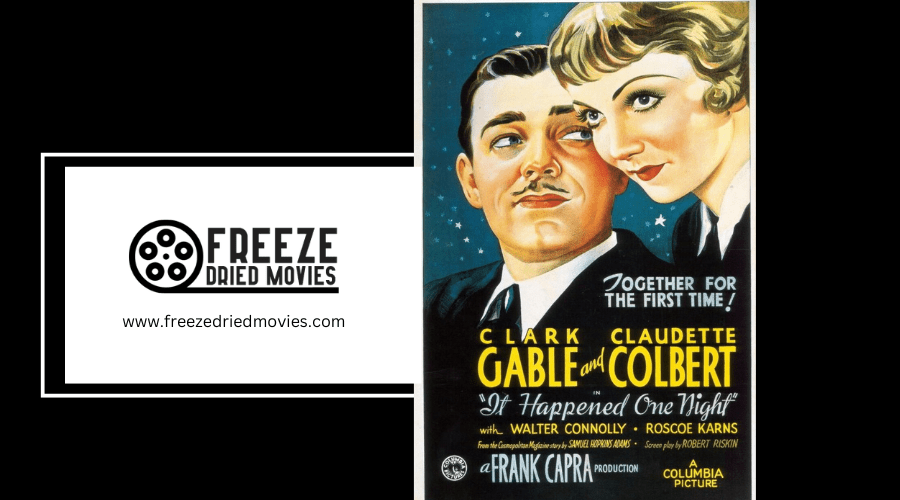
When considering the evolution of romantic comedies, the 1930s stand out as a pivotal decade where the genre truly found its footing. Iconic films like "It Happened One Night" and "Bringing Up Baby" not only entertained but also challenged societal norms and redefined on-screen chemistry. These movies offered more than just humor; they provided an escape during the Great Depression while subtly addressing deeper social issues. But what made these films so influential, and how did they set the stage for today's rom-coms? Delving into this rich cinematic period may offer some unexpected insights.
It Happened One Night
When "It Happened One Night" premiered in 1934, audiences experienced a pioneering romantic comedy that would define the genre for years to come. Directed by Frank Capra, the film stars Claudette Colbert as wealthy heiress Ellie Andrews and Clark Gable as the audacious journalist Peter Warne. Ellie escapes her overbearing father to reunite with her husband, embarking on a journey filled with comedic mishaps and romantic tension.
The film is notable not only for its captivating storyline but also for its memorable scenes, such as the iconic hitchhiking sequence and the "walls of Jericho" scene. These moments added significant charm and humor, helping the film become a timeless classic.
Remarkably, "It Happened One Night" was the first film to win all five major Academy Awards: Best Picture, Best Director, Best Actor, Best Actress, and Best Adapted Screenplay. This achievement cemented its status during Hollywood's golden era and influenced many subsequent romantic comedies. The palpable chemistry between Colbert and Gable set a high benchmark for the genre, demonstrating that romantic comedies could achieve both critical acclaim and broad popularity.
Bringing Up Baby
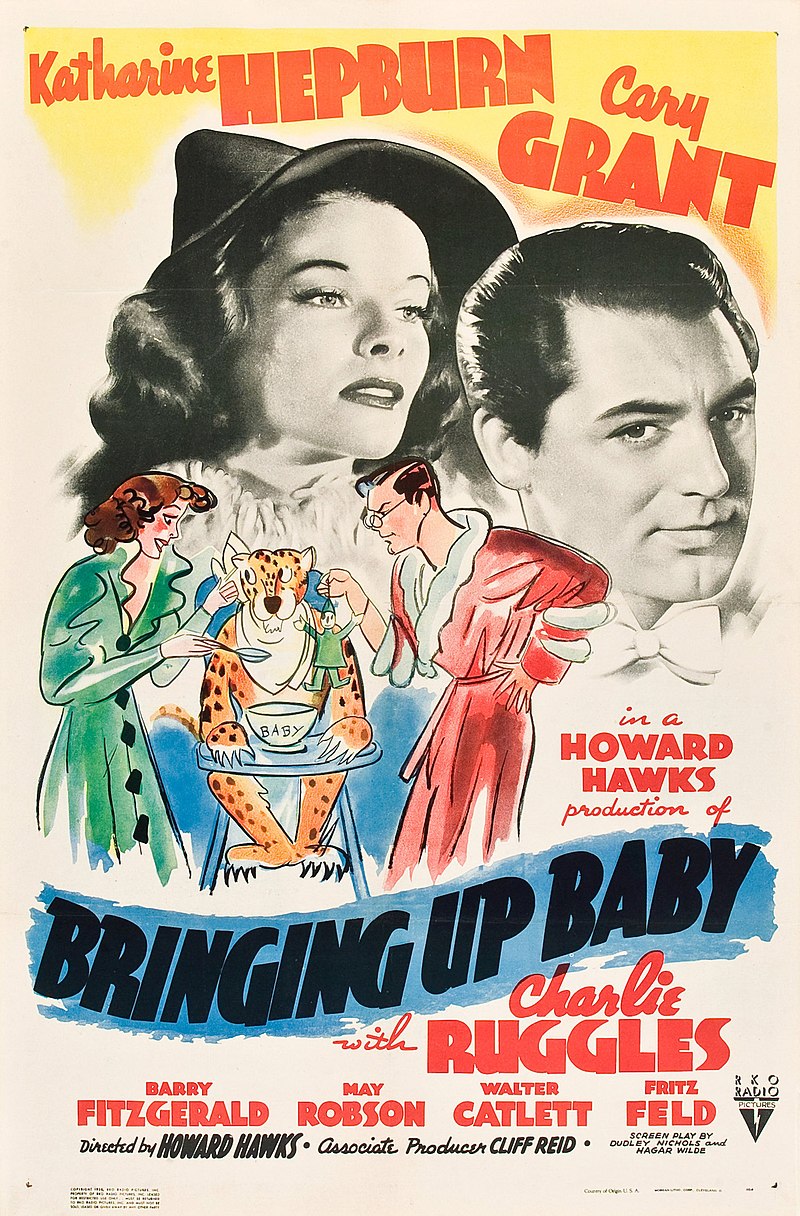
Following the groundbreaking success of "It Happened One Night," another iconic romantic comedy emerged in 1938: "Bringing Up Baby." Directed by Howard Hawks, this film stars Katharine Hepburn and Cary Grant in a whirlwind of comedic chaos. The story follows a paleontologist, played by Grant, whose orderly life is upended by Hepburn's spirited character and her pet leopard, Baby.
"Bringing Up Baby" is a masterclass in slapstick humor and witty dialogue, making it a standout among romantic movies of its time. The plot revolves around a missing dinosaur bone, adding to the hilarity and confusion. Despite its initial lukewarm reception, the film has since been lauded as one of the greatest comedies of all time. The chemistry between Hepburn and Grant is electric, contributing considerably to its enduring legacy.
Here's a quick overview:
| Aspect | Details |
|---|---|
| Director | Howard Hawks |
| Release Year | 1938 |
| Main Stars | Katharine Hepburn, Cary Grant |
| Key Elements | Slapstick humor, witty dialogue, leopard |
"Bringing Up Baby" remains a quintessential example of the screwball comedy genre, showcasing the perfect blend of humor and romance that defines classic romantic movies.
Holiday
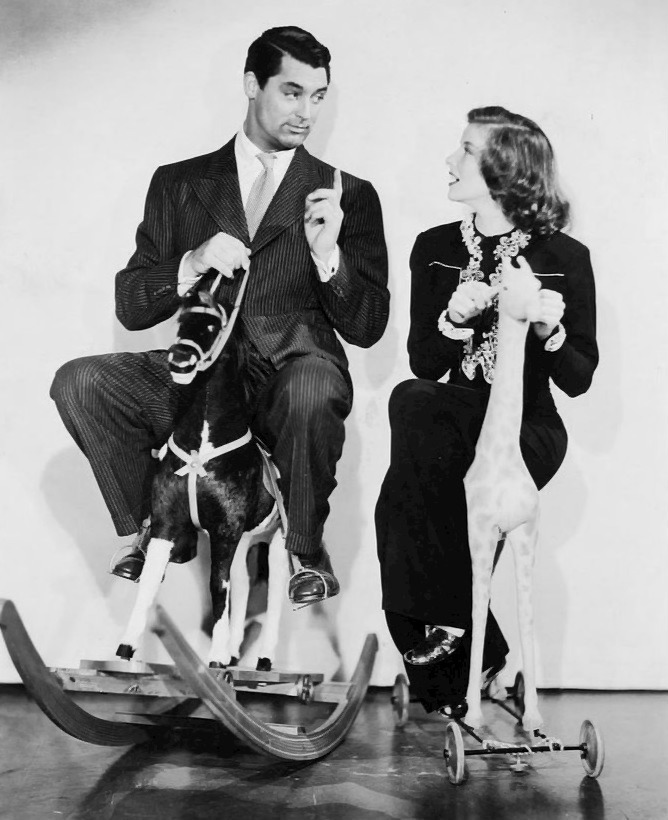
"Holiday," released in 1938 and directed by George Cukor, is a romantic comedy that delves into the tension between personal freedom and societal expectations. Starring Cary Grant as Johnny Case and Katharine Hepburn as Linda Seton, the film explores Johnny's inner conflict as he navigates his feelings for Linda while contending with the influence of her wealthy family and her sister's expectations.
Cary Grant's portrayal of Johnny is both charming and thought-provoking. Johnny's desire to live life on his own terms clashes with the expectations imposed by Linda's affluent family. The film's sophisticated humor and witty dialogue highlight the complexities of relationships and family dynamics, making it a standout in the genre.
"Holiday" emphasizes themes of love, individuality, and the clash between tradition and modernity, resonating strongly with audiences. As the third collaboration between Hepburn and Grant, their on-screen chemistry further solidifies the film's status as a beloved classic in their filmography.
My Man Godfrey
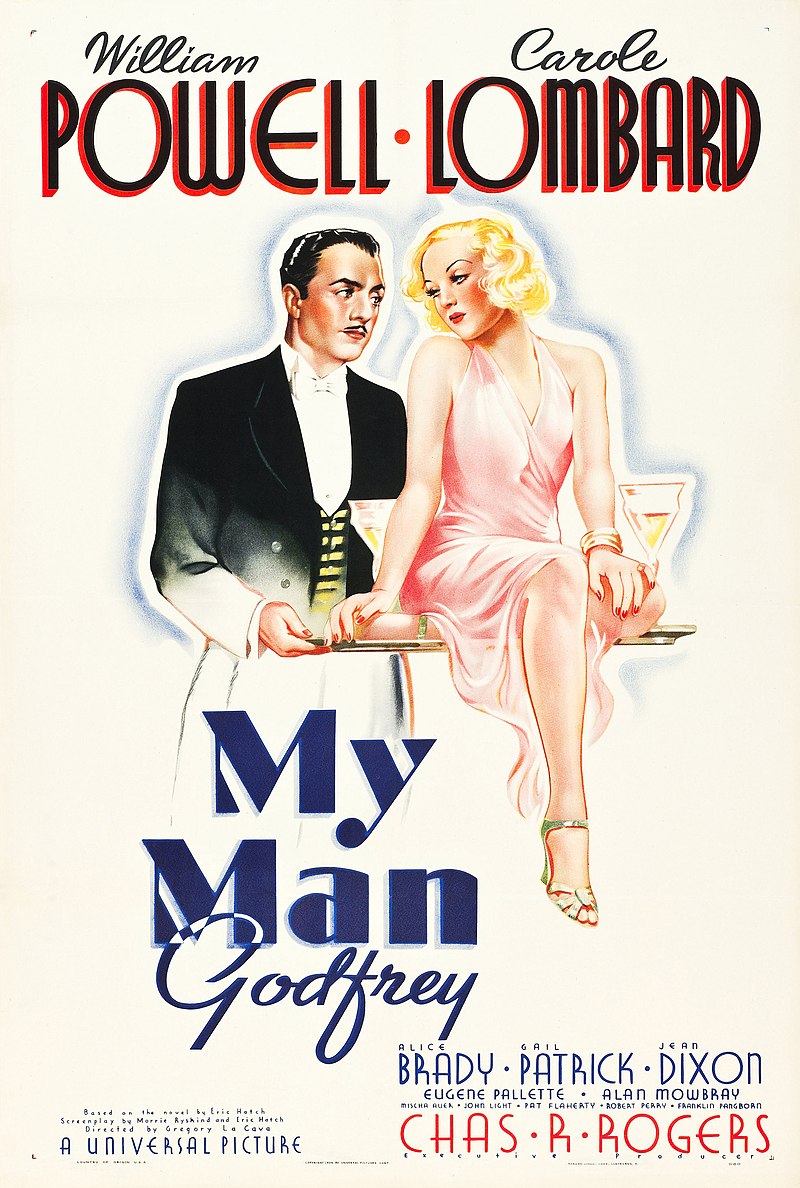
"My Man Godfrey" offers a brilliant satire on social class, contrasting the wealthy Bullock family's absurdity with Godfrey's quiet dignity. The film excels through its character dynamics, especially the interactions between William Powell and Carole Lombard. This screwball comedy not only entertains but also critiques the frivolity of the privileged during the Great Depression.
Social Class Satire
"My Man Godfrey" (1936), directed by Gregory La Cava, deftly critiques the absurdities of upper-class life through sharp social satire. The film employs a socialite's scavenger hunt to highlight the stark contrast between the elite and the destitute. The story follows Godfrey Park, portrayed by William Powell, a homeless man living in a dump who is discovered and subsequently hired as a butler by the wealthy Bullock family. This setup allows the film to expose the frivolity and moral emptiness endemic among the rich.
As Godfrey adapts to his new role, the superficial concerns and outlandish behavior of the Bullocks, particularly Irene Bullock (Carol Lombard), come to the fore. The film critiques the social class disparity, emphasizing the often comical but troubling disconnect of the wealthy during the Great Depression. With its clever dialogue and sharp social commentary, "My Man Godfrey" became a hallmark of the romantic comedy genre, earning six Academy Award nominations. It remains significant for blending humor with serious social issues, reflecting the shifting societal attitudes of the 1930s, and continues to be celebrated for its insightful portrayal of class dynamics.
Character Dynamics
The sharp social satire of "My Man Godfrey" not only critiques upper-class absurdities but also thrives on the intricate character dynamics within the Bullock household. Central to these dynamics is Godfrey Park, portrayed by William Powell, whose role as the butler illuminates the stark contrast between the privileged Bullocks and the working class. His interactions with each family member reveal their moral shortcomings and lack of depth.
- Irene Bullock, played by Carole Lombard, embodies a naive yet earnest socialite who meets Godfrey during a scavenger hunt.
- Godfrey's relationship with Irene evolves from a mere employer-employee interaction to a deeper, transformative bond, challenging her perceptions of reality.
- Each family member's reaction to Godfrey's presence highlights their frivolity and detachment from real-world struggles.
These character dynamics serve not just to entertain but to critique the social elite. Godfrey provides Irene and, by extension, the audience with a sense of reality, questioning the true value of wealth and privilege. His evolving relationship with Irene adds layers of romance and social critique, making "My Man Godfrey" a timeless commentary on class disparity and personal integrity.
Ninotchka

"Ninotchka," a 1939 classic directed by Ernst Lubitsch, stars Greta Garbo as a stern Soviet diplomat on a mission in Paris. The film masterfully blends humor and romance against a backdrop of political tension, epitomizing the essence of romantic comedies. Garbo's performance is a revelation as she transitions seamlessly from her renowned dramatic roles to a character brimming with sharp wit and comedic flair.
The core of "Ninotchka" is the romantic tension between Garbo's Ninotchka and Count Leon d'Algout, played by Melvyn Douglas. Their chemistry not only generates laughter but also offers a clever commentary on the cultural clash between communism and capitalism. The film's dialogue is rich with clever repartee, making it a standout example of the genre's zenith in the 1930s.
"Ninotchka" received four Academy Award nominations, solidifying its place in cinematic history. Beyond its humor, the film provides poignant social commentary on love and politics, demonstrating how cultural differences can be both divisive and unifying. Through its sharp wit and engaging storyline, "Ninotchka" remains a timeless classic in the romantic comedy genre.
The Evolution of the Genre
The Evolution of the Romantic Comedy Genre
"Ninotchka" captivated audiences with its blend of humor and romance, exemplifying a broader trend in 1930s cinema. This period marked a significant turning point for romantic comedies, with classics like "It Happened One Night" and "Bringing Up Baby" establishing the core tropes of love, humor, and misunderstandings. These films set the stage for the genre's evolution, introducing elements that would become fundamental in romantic storytelling.
- Critical Acclaim: Frank Capra's "It Happened One Night" became the first film to win all five major Academy Awards, demonstrating the genre's potential for widespread success.
- Screwball Comedy: Introduced during this decade, screwball comedies like "My Man Godfrey" emphasized witty dialogue and slapstick humor while exploring class differences and social commentary.
- Iconic Leads: Stars like Katharine Hepburn and Cary Grant emerged as iconic romantic leads, bringing themes of personal freedom and societal expectations to light.
The evolution of romantic comedies in the 1930s not only entertained audiences but also reflected societal changes, including shifting gender roles and attitudes towards love and marriage. This decade laid the groundwork for the timeless appeal of the romantic comedy genre.
Key Directors and Their Impact
Key directors like Frank Capra, Howard Hawks, and George Cukor left a lasting impact on the romantic comedies of the 1930s. Capra's "It Happened One Night" combined romance with comedic misunderstandings, Hawks showcased slapstick humor in "Bringing Up Baby," and Cukor explored sophisticated themes in "Holiday." Their distinct styles and storytelling techniques have shaped these films into timeless classics that continue to influence the genre today.
Frank Capra's Signature Style
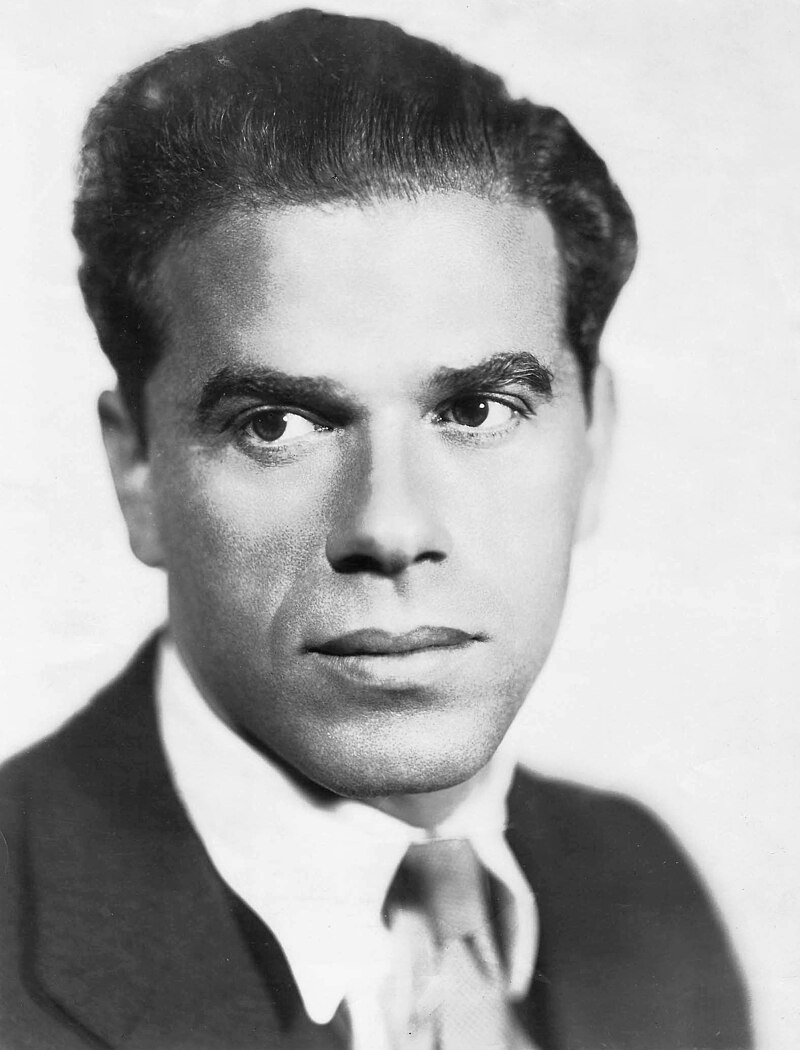
Frank Capra's signature style in the 1930s revolutionized romantic comedies by seamlessly blending humor with heartfelt romance. When you think of Capra, "It Happened One Night" instantly comes to mind. This iconic film didn't just entertain; it swept the Oscars, winning five major awards, including Best Picture. Capra's genius lay in his ability to create strong, relatable characters who faced both social and romantic challenges, reflecting the aspirations of the Great Depression era.
Several elements made Capra's films stand out:
- Witty Dialogue: His characters exchanged sharp, memorable lines that kept audiences engaged and entertained.
- Moral Lessons: Each film carried an underlying message, adding depth to the humor and romance.
- Star Collaboration: Working with actors like Claudette Colbert and Cary Grant, Capra brought out performances that were both charming and complex.
Through films like "It Happened One Night," Capra demonstrated that romantic comedies could be more than just lighthearted fun—they could also reflect broader societal values. His creative approach set a high bar for the genre, inspiring future filmmakers to explore themes of love, social class, and personal freedom. Capra's influence on romantic comedies remains undeniable, making him a crucial figure in cinema history.
Howard Hawks' Comedic Brilliance
Howard Hawks was a towering figure in 1930s romantic comedy, capturing its essence with unparalleled skill. His 1938 film "Bringing Up Baby" exemplifies his ability to blend romance and comedy seamlessly, creating laugh-out-loud scenarios that left audiences delighted. Hawks' talent for crafting strong character dynamics is evident in his frequent collaborations with top actors like Cary Grant and Katharine Hepburn, whose sharp, witty dialogue and impeccable comedic timing became hallmarks of the genre.
Hawks often featured strong, independent female characters in his films, challenging traditional gender roles and offering nuanced portrayals of relationships. This progressive approach made his storytelling fresh and relatable, resonating deeply with audiences. His fast-paced narratives and overlapping dialogue set a new standard in romantic comedy, influencing countless filmmakers.
"Bringing Up Baby" remains a landmark in the genre, celebrated for its slapstick humor and the undeniable chemistry between its leads. This film alone solidified Hawks' reputation as a master of romantic comedy, showcasing his comedic brilliance and lasting impact on cinema. Hawks' innovative approach not only entertained but also redefined how relationships were portrayed on screen.
George Cukor's Sophisticated Humor
While Howard Hawks brought a unique flair to 1930s romantic comedies, George Cukor's sophisticated humor carved a distinctive niche in the genre, setting a new standard. Cukor's 1938 film "Holiday" masterfully explores themes of personal freedom versus societal expectations through the story of Johnny and Linda. The sophisticated humor and nuanced character development in this film are hallmarks of Cukor's style, making it a standout in the genre.
Cukor had a unique talent for drawing nuanced performances from his actors. His collaborations with stars like Cary Grant and Katharine Hepburn elevated the romantic comedy genre, bringing depth and complexity to their characters.
- "Holiday" (1938): Explores personal freedom vs. societal expectations.
- "The Philadelphia Story" (1940): Sets a benchmark for sophisticated romantic comedies.
- Strong Female Leads: Reflecting Cukor's belief in character-driven narratives.
In "The Philadelphia Story," Cukor combined sharp wit, complex characters, and intricate love triangles, setting a benchmark for sophisticated romantic comedies. His films, often featuring strong female leads, reflected his belief in character-driven narratives, greatly influencing the portrayal of women in the genre. Cukor's mastery of dialogue and comedic timing ensured the lasting appeal of his films, helping to define the romantic comedy genre's stylistic and thematic conventions in the 1930s and beyond.
Cultural and Historical Context
The 1930s, a decade marked by the aftermath of the Great Depression, witnessed the rise of romantic comedies as a form of escapism, providing audiences with much-needed laughter and hope. Films such as "It Happened One Night" (1934) and "Bringing Up Baby" (1938) became cultural touchstones, reflecting and shaping the evolving dynamics between men and women. While society grappled with shifting gender roles, romantic comedies offered a lighthearted counterbalance to the economic struggles of the time.
| Hardships | Escapism |
|---|---|
| Economic struggles | Whimsical romance |
| Unemployment | Witty dialogue |
| Social instability | Lighthearted humor |
These films didn't just entertain; they helped define societal expectations of love and relationships. During a period of widespread uncertainty, movies like "Holiday" (1938) and "My Man Godfrey" (1936) showcased sophisticated humor and witty dialogue. The success of this genre contributed to Hollywood's rise as a global entertainment powerhouse, appealing to audiences yearning for joy and laughter.
Iconic Performances

When you think about iconic performances in 1930s romantic comedies, Claudette Colbert, Cary Grant, Katharine Hepburn, William Powell, and Greta Garbo each brought something unique to the screen. Their memorable portrayals, dynamic on-screen chemistry, and signature acting styles set the standard for the genre. These actors didn't just entertain; they defined an era and influenced generations of romantic comedies to come.
Memorable Lead Actors
Stepping into the world of 1930s romantic comedies, one cannot overlook the unforgettable performances that brought characters to life and defined the genre. Claudette Colbert's portrayal of Ellie Andrews in "It Happened One Night" (1934) is a prime example. Her performance not only earned her an Academy Award for Best Actress but also cemented her status as a leading lady in romantic comedies. Colbert's charm and wit made Ellie Andrews an enduring character, setting a high bar for future actresses in the genre.
- Katharine Hepburn: Her spirited role alongside Cary Grant in "Bringing Up Baby" (1938) showcased her comedic talent and helped define the dynamic female lead in romantic comedies.
- Cary Grant: With roles in "Holiday" (1938) and "Bringing Up Baby," Grant's charm and versatility made him one of the period's most beloved leading men.
- William Powell: His portrayal of Godfrey in "My Man Godfrey" (1936) highlighted his ability to blend humor with social commentary, earning him critical acclaim.
These actors' memorable performances were instrumental in shaping the romantic comedy genre of the 1930s, leaving a lasting impact that continues to be celebrated today.
Unforgettable On-Screen Chemistry
Unforgettable on-screen chemistry can elevate a romantic comedy from enjoyable to iconic, and the 1930s had no shortage of such magical pairings. Consider It Happened One Night (1934), where Claudette Colbert and Clark Gable's dynamic performances set the standard for the genre. Their chemistry earned the film five major Oscars, including Best Actor and Best Actress, cementing its place in cinematic history.
In Bringing Up Baby (1938), Katharine Hepburn and Cary Grant's witty banter and impeccable comedic timing create an electric atmosphere that elevates the film to classic status. Their chemistry keeps audiences laughing and invested in their unpredictable romance.
Holiday (1938) also features Hepburn and Grant, whose romantic tension and contrasting characters explore themes of love and societal expectations. Their on-screen partnership balances humor and depth, showcasing their iconic status.
William Powell and Carole Lombard in My Man Godfrey (1936) navigate social dynamics with comedic flair, their remarkable chemistry adding layers to their characters' interactions.
Signature Acting Styles
Signature acting styles from the 1930s' romantic comedies didn't just entertain; they set a high bar for future generations. Claudette Colbert's performance in "It Happened One Night" (1934) exemplifies this. Her blend of charm and wit earned her an Academy Award for Best Actress, defining the genre's essence. Colbert's effortless delivery and on-screen chemistry became a template for romantic leads.
Katharine Hepburn's spirited portrayal in "Bringing Up Baby" (1938) highlighted her unique delivery and impeccable comedic timing. Hepburn's lively and unconventional approach made her a standout in screwball comedies, influencing countless actresses.
Cary Grant's suave and charismatic style in "Holiday" (1938) and "Bringing Up Baby" (1938) set the standard for romantic male leads. His effortless charm and humor became iconic, shaping male characters in romantic comedies for years to come.
- Claudette Colbert: Blended charm and wit in "It Happened One Night."
- Katharine Hepburn: Spirited and unique in "Bringing Up Baby."
- Cary Grant: Suave and charismatic in "Holiday" and "Bringing Up Baby."
These actors' signature styles created a lasting impact, making the 1930s a golden period for romantic comedies.
Legacy of 1930s Rom-Coms
The legacy of 1930s romantic comedies is undeniable, as these films laid the groundwork for the genre's enduring appeal. Movies like "It Happened One Night" and "Bringing Up Baby" are often hailed as some of the best films of their time. "It Happened One Night" made history by sweeping the five major Academy Awards, underscoring the critical acclaim and cultural significance of these early rom-coms.
During the Great Depression, films such as "Holiday" and "My Man Godfrey" tackled themes of social class and personal freedom, resonating with audiences who faced similar struggles. The witty dialogue and impeccable comedic timing seen in these films became a template for future rom-coms, influencing generations of filmmakers.
The impact of these 1930s classics is still evident in modern romantic comedies. Their charm, humor, and ability to address complex emotional themes within a lighthearted framework have left an indelible mark on the genre. The conventions they established—sharp banter, mismatched couples, and playful misunderstandings—continue to entertain and inspire. These movies don't just belong to the past; they remain celebrated touchstones in the world of film.


